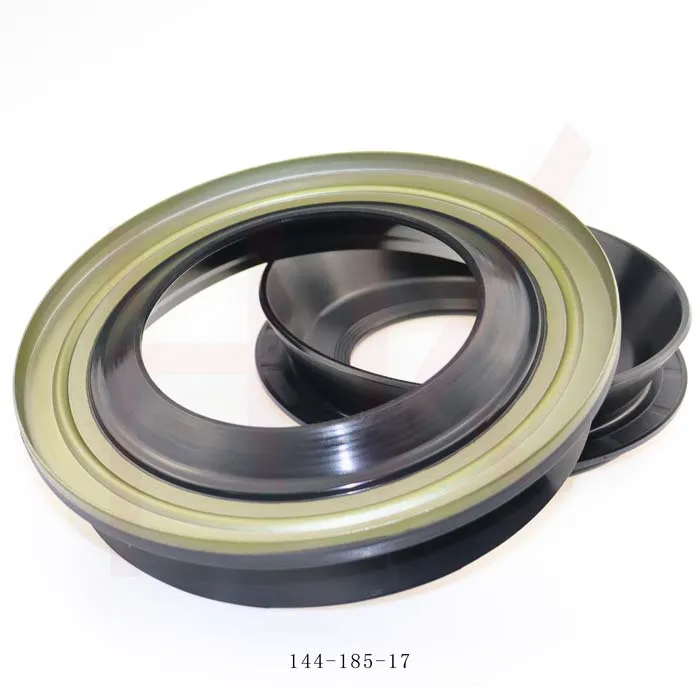Dec . 21, 2024 05:35 Back to list
hydraulic oil seal material
Understanding Hydraulic Oil Seal Materials
Hydraulic systems are integral to various industries, powering machinery and equipment with precision and reliability. A critical component in most hydraulic systems is the oil seal, which prevents the leakage of hydraulic fluid while also keeping contaminants out. The effectiveness of these seals largely depends on the materials from which they are made. In this article, we will explore the common materials used in hydraulic oil seals, their properties, advantages, and applications.
Common Materials Used in Hydraulic Oil Seals
1. Nitrile Rubber (NBR) Nitrile rubber, also known as Buna-N, is one of the most widely used materials for hydraulic oil seals. It exhibits excellent resistance to petroleum-based oils, solvents, and hydraulic fluids. The operating temperature range of NBR is typically between -40°F to 250°F (-40°C to 121°C), making it suitable for various environments. Its elasticity and strength also contribute to its longevity in service, which is crucial for maintaining hydraulic system efficiency.
2. Polyurethane (PU) Polyurethane seals offer superior abrasion resistance compared to NBR and can endure higher pressures. They are ideal for dynamic applications due to their excellent resilience and low friction characteristics. Polyurethane also exhibits good resistance to hydraulic fluids and can operate in temperatures ranging from -40°F to 215°F (-40°C to 102°C). These properties make PU seals a preferred choice for high-performance hydraulic systems in industries like construction and automotive.
3. Fluoroelastomer (FKM) Fluoroelastomers, such as Viton, are well-known for their exceptional resistance to extreme temperatures and aggressive chemicals. They can function effectively in temperature ranges from -15°F to 400°F (-26°C to 204°C). Due to their robustness in hostile environments, FKM seals are often used in aerospace and high-temperature industrial applications. While they tend to be more expensive, their durability and reliability justify the cost.
hydraulic oil seal material

4. Silicone Rubber Silicone rubber is another material used for hydraulic seals, particularly in applications that require exceptional high and low-temperature resistance. Silicone can function in temperatures from -100°F to 450°F (-73°C to 232°C). However, it is generally not recommended for high-pressure applications or where exposure to petroleum oils is frequent, as it lacks the resilience of NBR or PU.
5. PTFE (Polytetrafluoroethylene) PTFE, commonly known by the brand name Teflon, is utilized in hydraulic systems for its outstanding chemical resistance and low friction properties. Although it can handle a wide range of temperatures (from -328°F to 500°F or -200°C to 260°C), PTFE may not provide the best sealing capability under dynamic conditions unless used in conjunction with other materials. Its use is often seen in specialized hydraulic applications requiring chemical inertness.
Selecting the Right Material
Selecting the appropriate material for hydraulic oil seals should be based on several critical factors, including - Fluid Compatibility Ensure that the seal material is compatible with the specific hydraulic fluid being used. - Temperature Range Consider the operating temperature of the hydraulic system to choose a seal material that can withstand these conditions. - Pressure Levels Evaluate the pressure levels and dynamic movements within the application to determine the necessary durability of the seal. - Cost-Effectiveness Balance the initial material costs with the expected lifespan and performance benefits.
Conclusion
Hydraulic oil seals play a vital role in the efficiency and reliability of hydraulic systems. The choice of seal material significantly influences the performance and longevity of the seal. By understanding the properties and applications of materials such as NBR, polyurethane, fluoroelastomers, silicone rubber, and PTFE, engineers and maintenance professionals can make informed decisions, ultimately enhancing system performance and reducing costs associated with leaks and seal failures. As technology continues to advance, new materials and formulations may offer even greater durability and versatility for hydraulic applications in the future.
-
TCN Oil Seal Metal Ring Reinforcement for Heavy Machinery
NewsJul.25,2025
-
Rotary Lip Seal Spring-Loaded Design for High-Speed Applications
NewsJul.25,2025
-
Hydraulic Cylinder Seals Polyurethane Material for High-Impact Jobs
NewsJul.25,2025
-
High Pressure Oil Seal Polyurethane Coating Wear Resistance
NewsJul.25,2025
-
Dust Proof Seal Double Lip Design for Construction Equipment
NewsJul.25,2025
-
Hub Seal Polyurethane Wear Resistance in Agricultural Vehicles
NewsJul.25,2025
-
The Trans-formative Journey of Wheel Hub Oil Seals
NewsJun.06,2025
Products categories
















